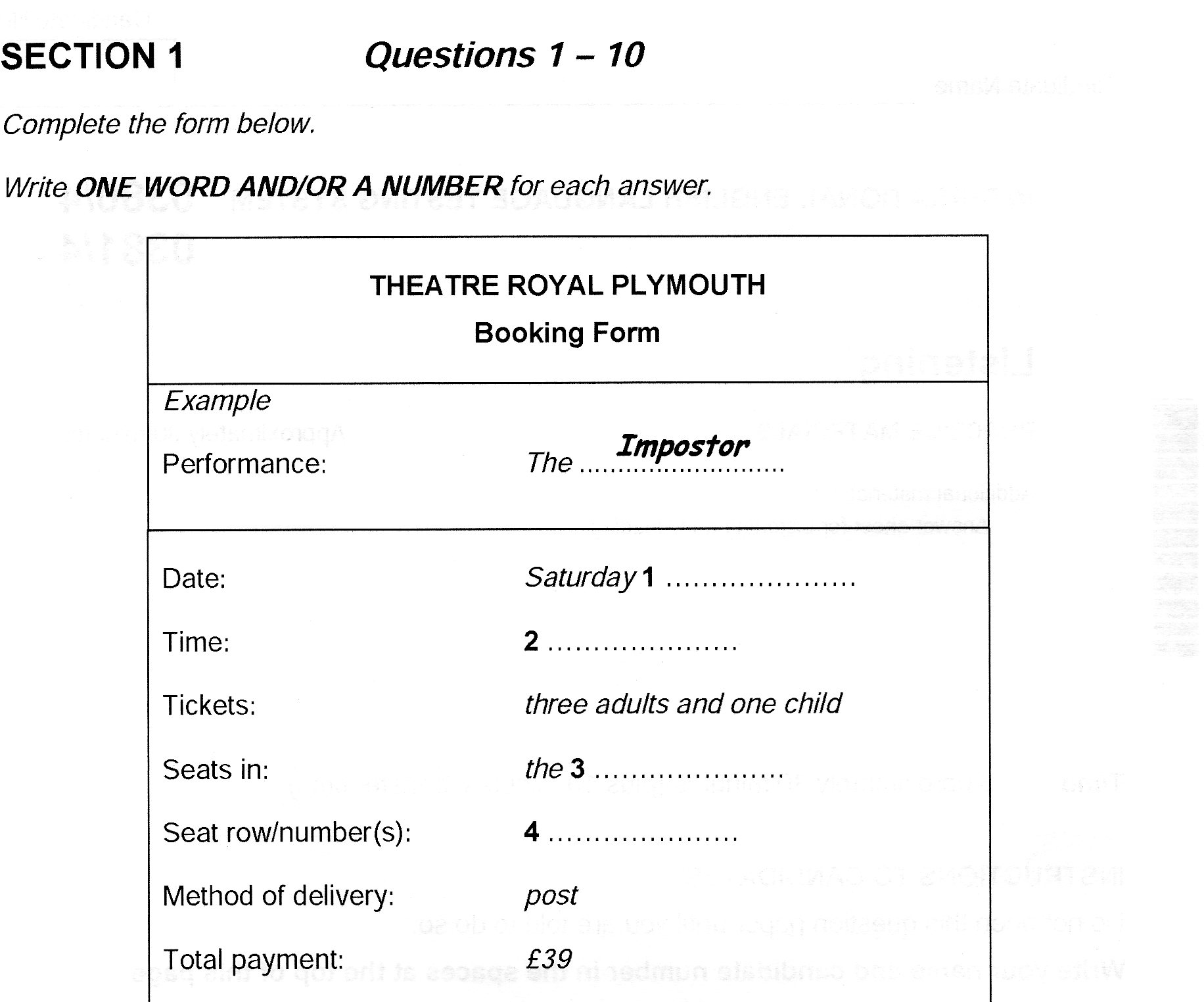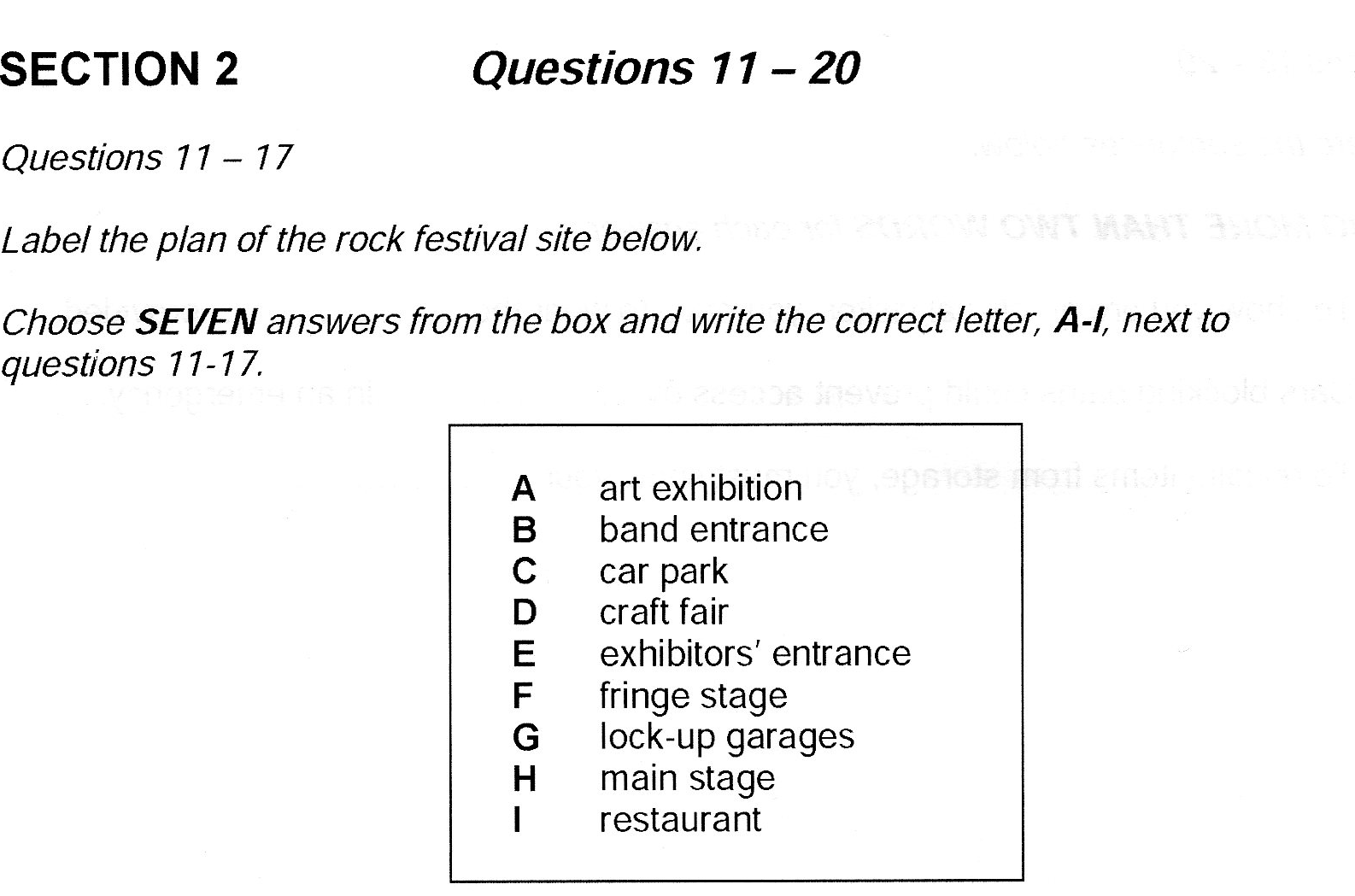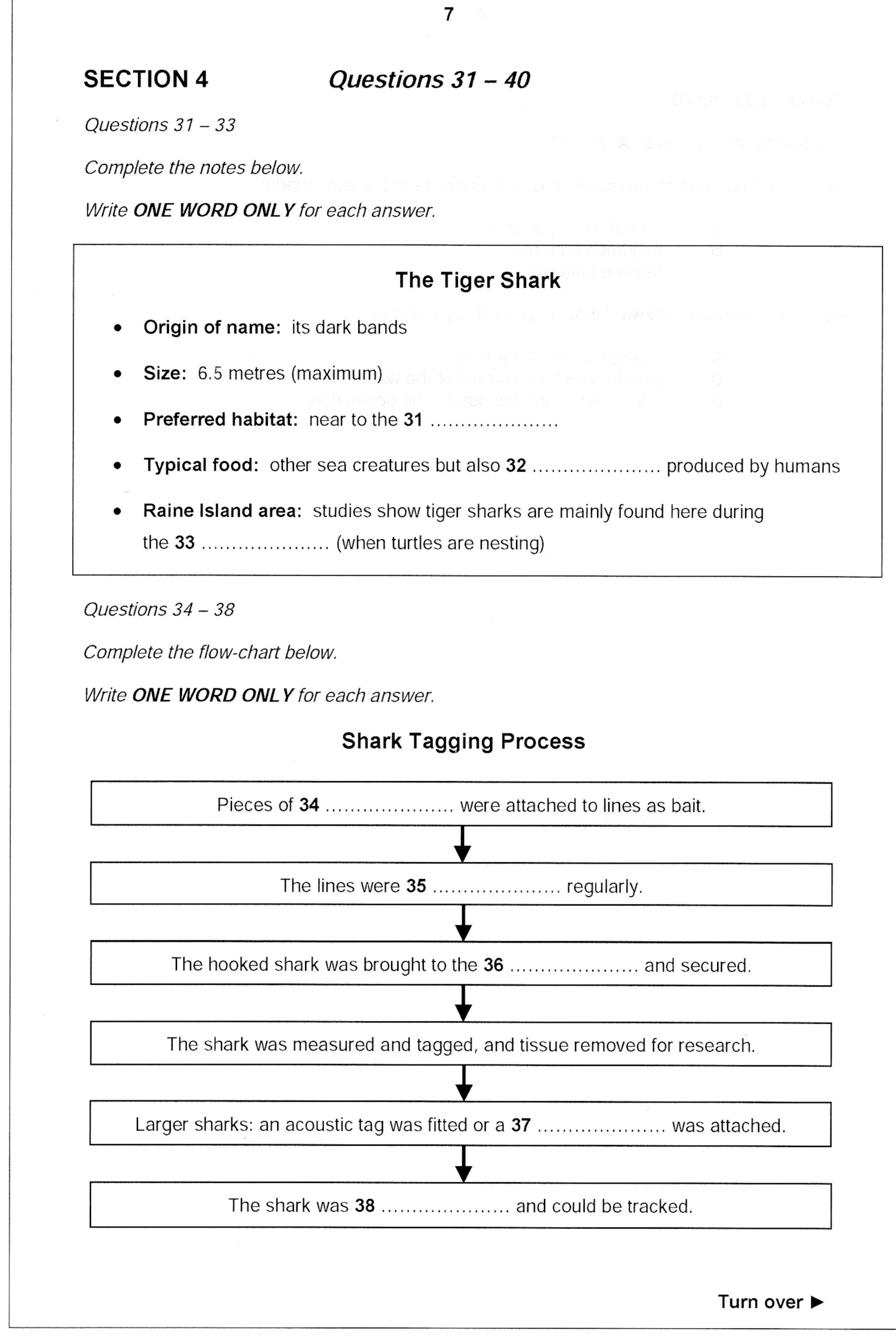IELTS Listening Questions
Introduction to the IELTS Listening Test
The IELTS Listening Test takes just 40 minutes to complete. You will get 30 minutes with 10 minutes to transfer your answers onto the answer sheet if you are taking the paper version of IELTS.
Those taking the computer-based version of IELTS type the answers directly onscreen and therefore do not have those 10 minutes at the end but do, however, have 2 minutes to check over their answers and make any changes they wish. That is the only difference between the paper and computer listening tests.
The same test is used for all test takers, Academic and General Training.
The Test Sections
The test is divided into 4 distinct parts. In each section, there are 10 questions. Here is a brief description of each section outlining the number of speakers you will hear in each and a general idea of the topics talked about.
Section 1: a conversation between 2 people. Typically, one of them is asking for information, the other provides it. An example would be someone phoning an institute and asking for details of the courses on offer.
Section 2: one person giving a short talk or speech on a topic related to work, a place or an event. The person gives information which we have to follow. This may include following a plan or map which is being described for us.
Section 3: a conversation between as many as 4 people discussing an educational or academic topic. An example would be, 3 students discussing an assignment between themselves or with their professor.
Section 4: a talk by one person on an educational or academic topic. A monologue on a topic of a general academic nature typically associated with note-taking or summarising.
Questions and Answers
Let's be clear about what the IELTS listening test is really testing and how it does that.
It's testing your ability to pick out important factual details, to follow descriptions and instructions, to distinguish between main and secondary points.
IELTS listening is also about your knowledge and range of vocabulary, testing it through the use of synonyms, antonyms and paraphrasing.
Remember that you will only hear the recordings ONCE. There's no chance to backtrack as you might in the reading test. So, what you do BEFORE the recordings start is absolutely vital.
Question types
There are two general types of IELTS listening test questions:
- Completion: Given strict instructions as to how many words and/or number you can use, you fill in the information on your question paper. The format varies. It can be completing a form, a table, a flow chart, notes, a summary or completing a sentence. To these we can add the question that asks you to give short answers which again is based on a certain word count. In all of these, the all the answers are given in the recording.
- Choosing options: These questions can be multiple choice, either where you are given a series of statements with 3 options (A, B, C) or where you choose 2 or 3 correct options out of a total of 5 or more. Options and choice are also evident when you have to label or match items on a plan or map.
IELTS listening practice tests give you a very clear idea of what type types of questions to expect in each section of the test.
Section 1:
The 10 questions in section 1 are always completion questions. Completing a form, the information in a table, complete sentences.
Take a look at this example from the Official IELTS Practice Materials 2, available online at www.ielts.org. You hear a telephone conversation between a customer and a theatre booking officer and you are asked to complete the form with only one word or a number in each space.
Detailed tips as to how to approach this type of task can be found here but keep in mind here to make the most of those precious 30 to 45 seconds you are given to look through the questions before the recording begins so that by the time it does, you are clear as to the context, the type of information to listen out for such as dates, numbers, spellings, the grammatical category of the words to fill in and so on.
Remember though that the example, given here at the beginning as the name of the performance The Imposter, is no longer provided in the recording. You are given some time to review the questions, then the recording starts and it's time to answer!

Section 2:
A little more variation. Table completion as well as completing sentences or giving short answers are common along with multiple choice questions where you are given three options based on a statement or where you need to label or match options to a plan, diagram or map.
This example, taken from the same source as the one above, asks you to label a plan choosing seven out of nine options. What you hear is the organiser of a rock festival talking to the group of exhibitors and performers at a planning meeting.
Again, it is clear that to do this type of task successfully, you have to be skilled at following spoken instructions and relating what you hear to what you can see on your question paper. One major difference between this type of task and the filling in the exercise described in Section 1 is the obvious fact that here the options are not in order. In all completion exercises, the numbered sequence of items to fill corresponds to the order in which you will them mentioned in the recording. In this case, however, the sequence is only determined by what you hear.

Section 3:
As the test becomes more complex, the questions become more varied. Most test-takers tend to find Section 3 of the listening test the most demanding. Some mention that the number of speakers, up to 4 remember, can be distracting and the fact that it is very common for multiple-choice options to include information that is partially true also complicated matters.
In this example, the continuation of the same practice test included in the Official IELTS Practice Materials 2 online source, there are only two speakers, a student and his tutor. However, practice listening to this type of conversation is well worth the effort. Questions 21 to 23, selecting the 3 factors the tutor advises Marco to consider look intimidating. They are not. All the information you need comes in the first part of the dialogue. You have to be very attentive to detail here and avoid being sidetracked, such as when the tutor begins by telling Marco that many students go for courses that match their personal interests but then go on to say that what is more important is how useful the course might be later in terms of job prospects.

Section 4:
The final part of the listening test brings us back to the completion tasks in our set of examples. Here, it's note-taking, completing the notes with just one word in each space, followed by a flow chart where, again, just one word is needed in each case.
No matter the part of the IELTS exam, the key to obtaining a good band score of 7.0 or above, lies above all, in your knowledge of vocabulary, its range and depth and your ability to paraphrase, to say the same using different words. The reading and the listening test rely heavily on the use of paraphrase as well as testing the range and depth of the test taker's vocabulary.
Take question 32 in the note completion exercise. As you listen, you will hear:

This is condensed as Typical food: other sea creatures but also ........ produced by humans.
Thus, "other sharks, turtles, seabirds and dolphins, to name but a few" becomes "other sea creatures" and the word "garbage", not an unfamiliar word but has to be taken from the mention of "human activity" as the sharks feed-in "harbours" and "river inlets".

Listening v. Listening for
This overview of the IELTS listening test question types should help guide you to plan your listening test preparation. Search this website for further help on tips, techniques and practice and remember that practice does not just mean doing Ielts listening practice tests but also a number of other possibilities including podcasts, radio and films.
At the same time, it is clear that IELTS listening does have a very clear set of question types with which we can familiarise ourselves with and become proficient at answering looking through and doing practice tests. As with all exam formats, the knowledge you bring to the exam as to its format and what you are expected to do, in this case, exactly what type of information to listen for, is essential if you are to obtain a good score.
